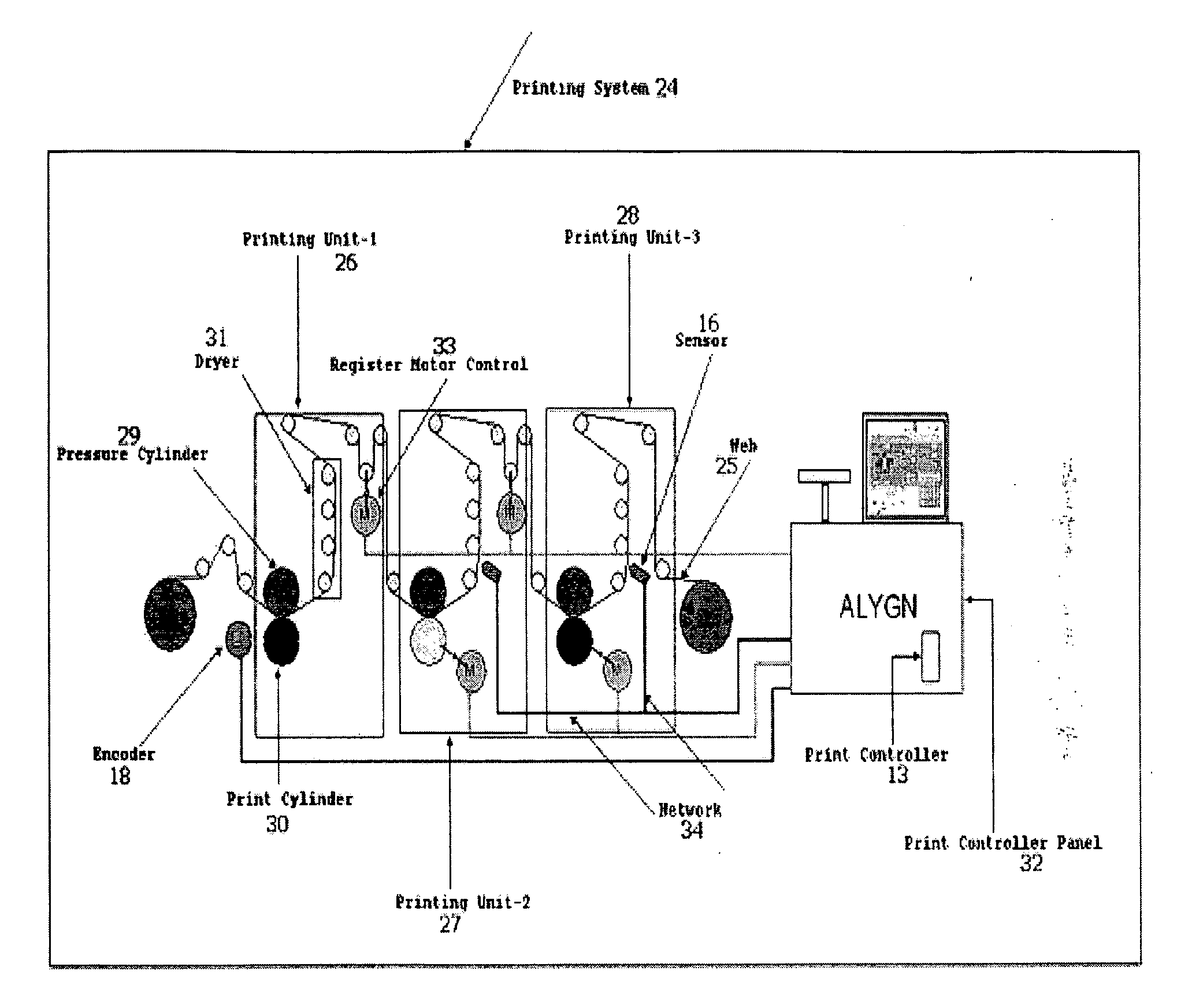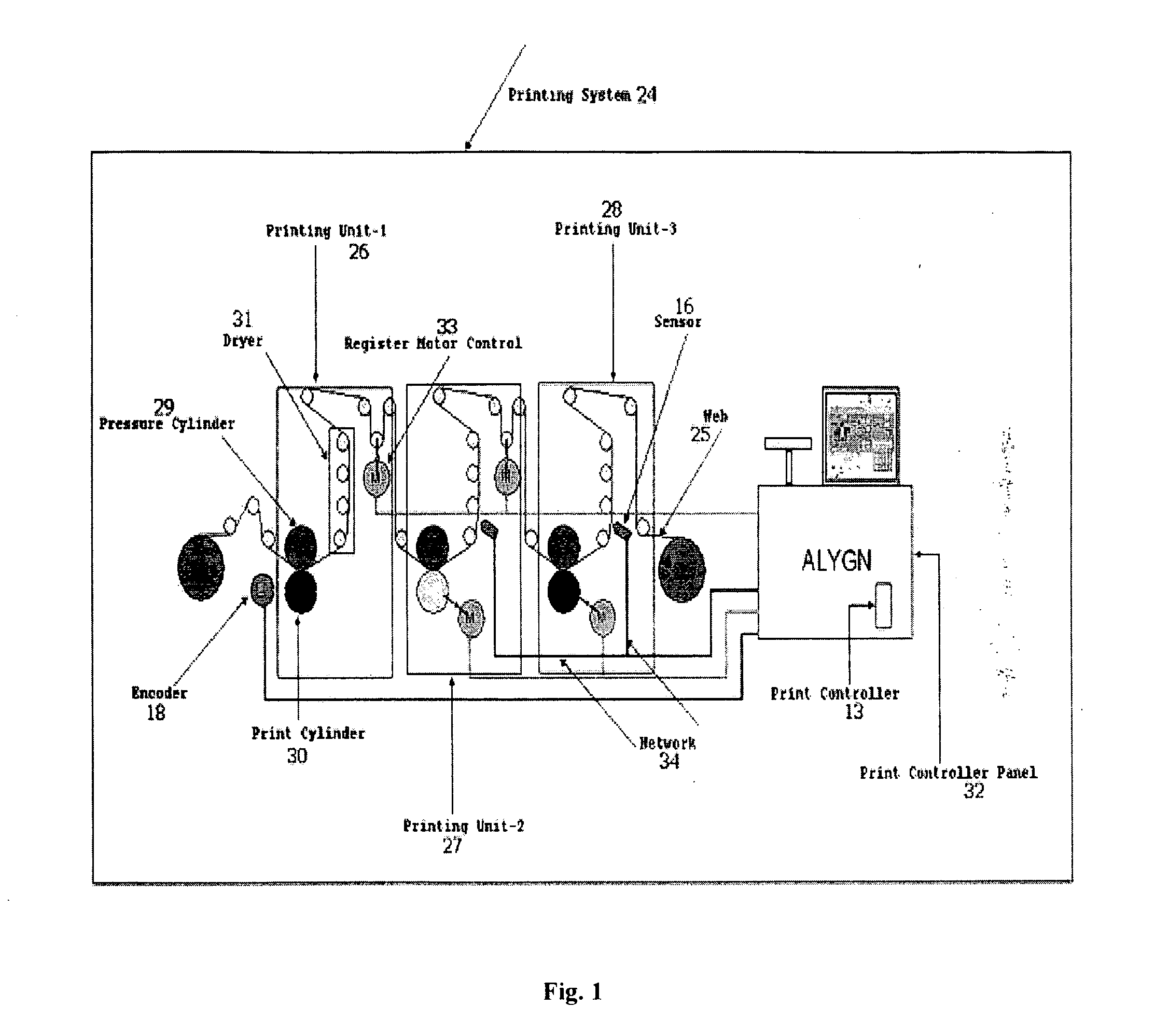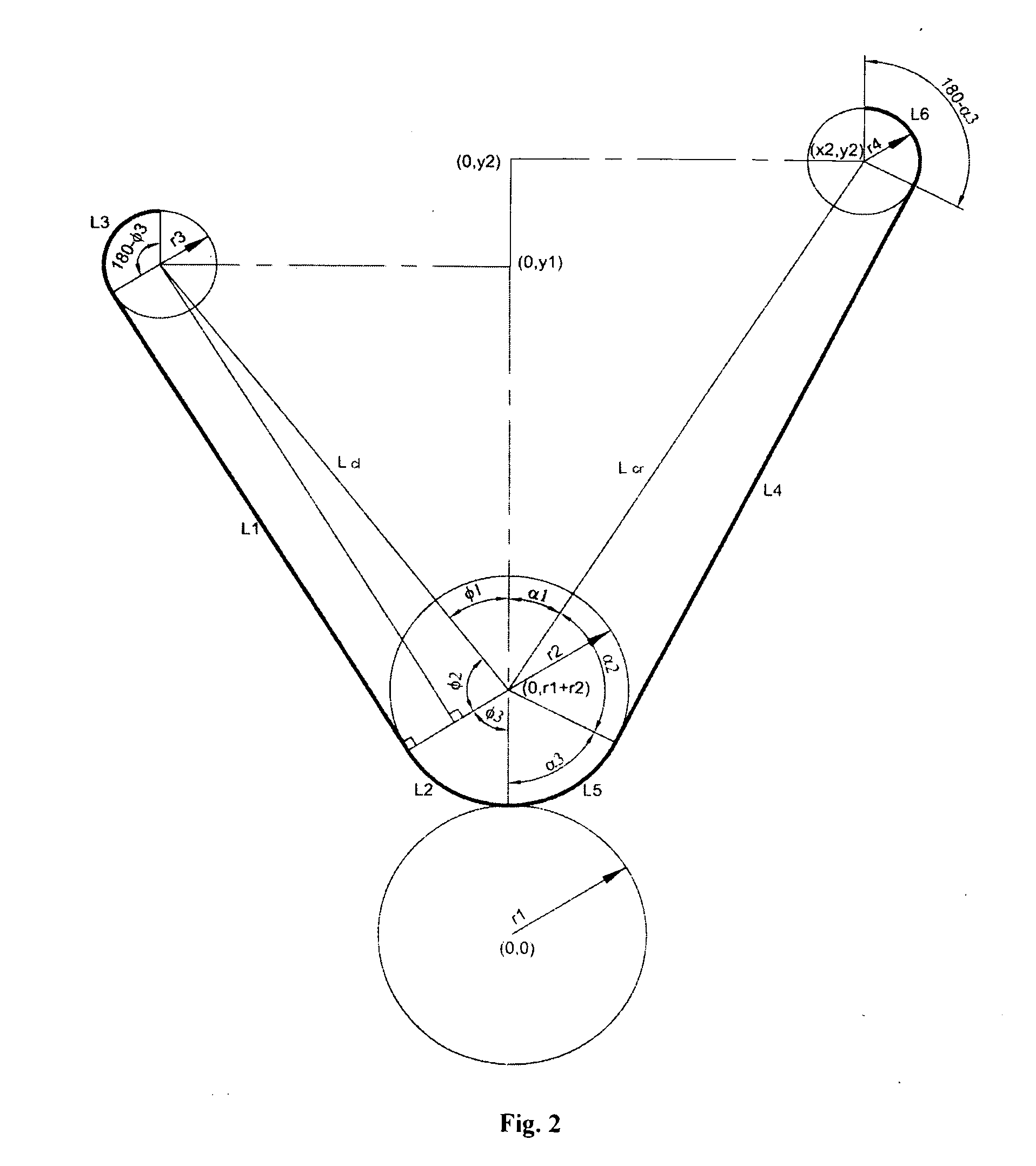Automatic register control system with intelligent optical sensor and dry presetting facility
a register control system and optical sensor technology, applied in the field of automatic register control system with intelligent optical sensor and dry presetting facility, can solve the problems of poor color registration, large amount of wasted, and method is not cost effective, and achieve the effect of minimizing printing losses and cost-effectiveness
- Summary
- Abstract
- Description
- Claims
- Application Information
AI Technical Summary
Benefits of technology
Problems solved by technology
Method used
Image
Examples
Embodiment Construction
[0037]It is apparent from the foregoing description of the prior art that the known printing devices and the associated systems for controlling print misregistration are not equipped to provide a means for dry register presetting before the commencement of a new print job and are also not very effective in preventing print losses, especially during high speed printing requirements.
[0038]A new method and an intelligent sensor is described herein working in consonance with an advanced register control system as part of a print processing system, which is found to have overcome some or all of the problems associated with the control of print misregistration in the prior art.
[0039]However, for the purpose of the present invention, following terms have their below-described respective meanings:
[0040]Automatic Mark Recognition (AMR) shall mean and include the state where sensor tries to recognize the position of predefined block marks of predefined height and gap between marks, which is u...
PUM
 Login to View More
Login to View More Abstract
Description
Claims
Application Information
 Login to View More
Login to View More - R&D
- Intellectual Property
- Life Sciences
- Materials
- Tech Scout
- Unparalleled Data Quality
- Higher Quality Content
- 60% Fewer Hallucinations
Browse by: Latest US Patents, China's latest patents, Technical Efficacy Thesaurus, Application Domain, Technology Topic, Popular Technical Reports.
© 2025 PatSnap. All rights reserved.Legal|Privacy policy|Modern Slavery Act Transparency Statement|Sitemap|About US| Contact US: help@patsnap.com



